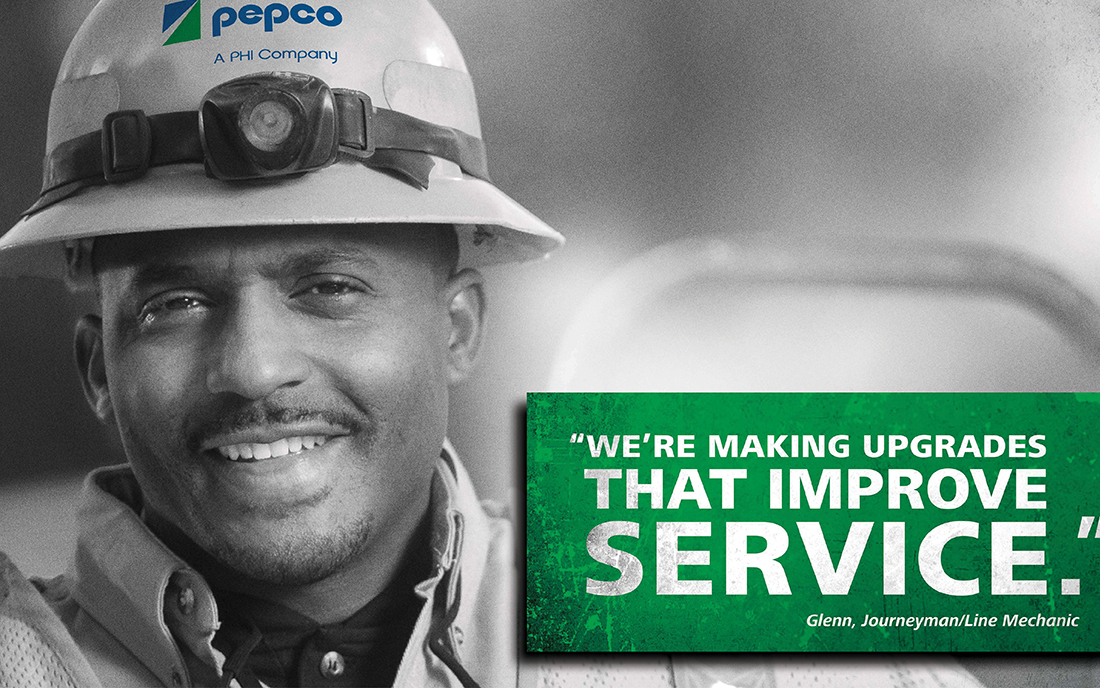Five Best Practices for Utility Branding

As a brand laboratory, public utilities offer unique and unrelenting challenges. Expectations are high, perceptions are often negative and years of reliability can be forgotten in the wake of one unforeseen storm. So it is vital for utilities to implement more effective brand strategies that work with customers of every demographic and ethnicity.
Here are five best practices to consider, based on our decade serving water and electric utilities.
- Showcase your people as brand champions.
Utility brands are all too easily defined as faceless, impersonal commodities. When pre-IPO research by American Water showed that half its customers didn’t know its name or local roots, Creative Co-op created a rebranding campaign that replaced generic water imagery with the faces and words of hard-working, committed employees. Brand awareness increased by 18.5%. A similar approach later helped spark a 25% increase in customer favorability for an electric utility once called “the most hated company in America.”
- Communicate your value at a glance.
Everyone receives an electric bill, regardless of their education or English fluency, so clarity and concrete benefits are essential to building a widely respected brand. To increase participation in Delmarva Power’s eight home energy savings programs, Creative Co-op developed a system of color-coded graphic tags that summarized bottom-line incentives and details for each program at a glance. The tags are used in everything from bill inserts to Facebook ads – not only driving participation in individual programs, but creating a distinctive family look that customers instantly recognize and relate to the Delmarva Power brand. Headlines provide reinforcement, consistently emphasizing an on-brand message that research showed resonated with all customers: “We’ll help you save money and energy.”
- Involve customers as true stakeholders.
After years of reliability problems in Montgomery County, MD, Pepco committed to a major grid enhancement program. A key factor in regaining trust was a quarterly progress report mailed to Montgomery County customers. Signed letters from top managers frankly addressed past problems, while providing a running update of year-to-date improvement in outage frequency and duration. Equally important, each mailing avoided glossy generalities in favor of the hard facts and figures that customers had identified as most important to them. After one year, 54% of polled customers were aware of Pepco’s efforts to improve reliability – and 77% said that recent advertising made them look more favorably on the utility.
- Become more responsive.
With so many customers now relying on mobile devices and apps, utilities wishing to stay relevant as a source of valued information must update their online presence with new responsive design formats that can be displayed appropriately on any device. Pepco Holdings’ Emergency Restoration Improvement Project (ERIP) leverages responsive design to position the utility as a real-time resource for storm preparation tips and outage updates, offering a seamless flow of information across storm-related website pages, web and mobile ads and a mobile app that provides real-time tools such as outage maps and estimates for when power will be restored. In 2014, Creative Co-op’s ERIP campaign generated nearly 200,000 clicks. Studies showed an increase of up to 12 points in customer satisfaction over the previous quarter, with similar improvement in customer perceptions of the utility’s efforts to restore power in a timely manner.
- Engage, don’t just educate.
Kilowatt-hours and BTUs can be difficult for all but the most technical customers to grasp, so utilities must find creative ways to live up to their role as champions of resource conservation and efficiency. When Pepco Holdings wanted to boost sales of energy-saving CFL and LED light bulbs, Creative Co-op developed “Bulb Swap Blitz” – an interactive game for mobile devices that showed how much consumers could save on energy costs each time they replaced a traditional incandescent bulb with more efficient CFL or LED lighting. Animated mobile ads challenging customers to play generated more than 7.5 million online impressions, plus more than 32,000 user interactions that helped customers learn more and find local retailers offering in-store rebates on efficient lighting products.
To learn more about these practices and how they can enhance your brand, take a look at our case studies or contact Creative Co-op today at (603) 658-1600.
LINKS
https://creativeco-op.com/wp-content/uploads/2016/02/CaseStudy_American-Water.pdf
https://creativeco-op.com/wp-content/uploads/2016/02/CaseStudy_Pepco_Reliability.pdf
https://creativeco-op.com/our-work/


